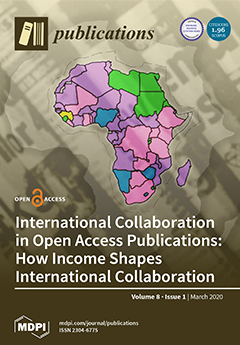The uncertainties around disease management and control measures have not only motivated clinicians to keep abreast of new evidence available in the scholarly literature, but also to be rigorously engaged in medical research, dissemination and knowledge transfer. We aimed to explore clinicians’ publication
[...] Read more.
The uncertainties around disease management and control measures have not only motivated clinicians to keep abreast of new evidence available in the scholarly literature, but also to be rigorously engaged in medical research, dissemination and knowledge transfer. We aimed to explore clinicians’ publication output from the Malaysian perspective. A self-report survey and bibliometric analysis was conducted. A total of 201/234 clinicians participated in the survey. Items consisted of demographics, researching habits, publication output and level of importance of journal selection metrics. Descriptive, bivariate and multivariate analyses were conducted. Bibliometric analysis using retrieved records from PubMed between 2009 and October 2019 was conducted and co-occurrence and co-authorship analyses were executed. Self-reported publication output was 16.9%. In the logistic regression model, publication output was significantly higher amongst consultants or clinical specialists (aOR = 2.5, 95% CI 1.1–10.0,
p = 0.023); clinicians previously involved in research (aOR = 4.2, 95% CI 1.5–11.4,
p = 0.004); clinicians who ever used reference citation managers (aOR = 3.2, 95% CI 1.3–7.7,
p = 0.010); and journal publication speed (aOR = 2.9, 95% CI 1.2–7.1,
p = 0.019). Most clinicians published original research papers (76.4%) in international journals (78.2%). Published papers were mostly observational studies, genetic, stroke and health services or systems research. In conclusion, socio-demographics, researching habits and journal selection metrics were significantly associated with self-reported publication output. Real outputs from bibliometrics were predominantly focused across five clusters.
Full article





